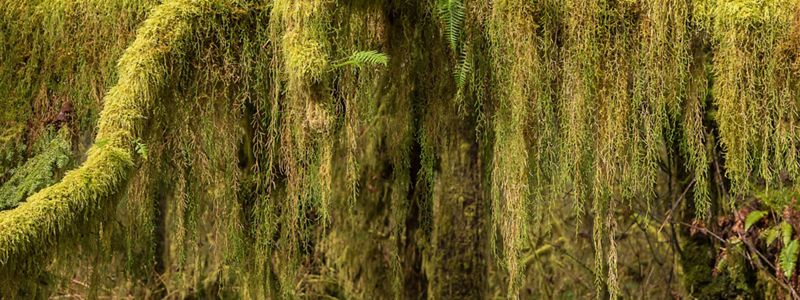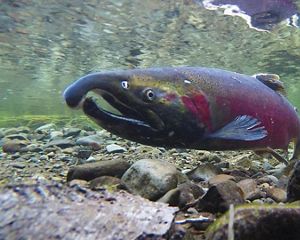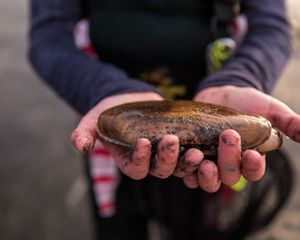Rematriating Buffalo in Washington State
by Leah Palmer, TNC writer/editor
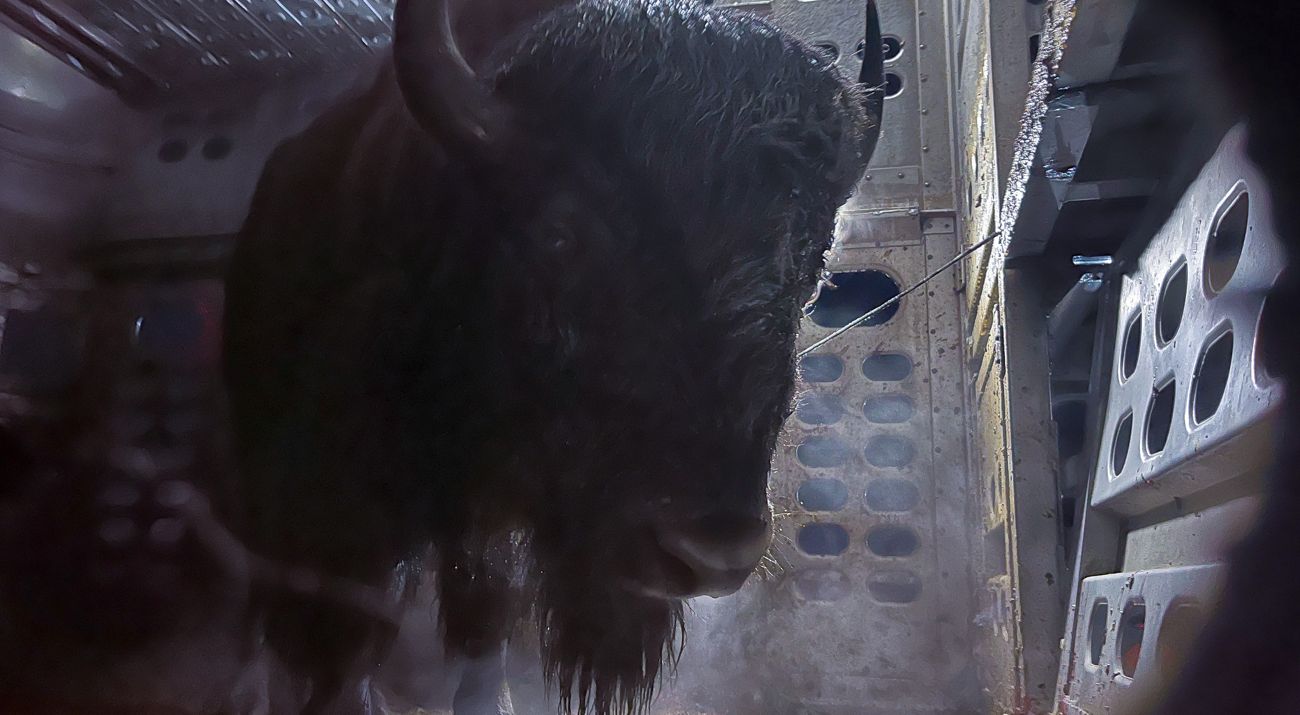
A Historic Herd
In the wee hours of a frosty night, under the Full Hunter’s Moon, more than 65 North American Plains Bison, commonly known as “buffalo,” were transferred from TNC’s Niobrara Preserve in Nebraska to the Kalispel Tribe of Indians in the far Northeast corner of Washington. The herd, which ranged in size and age, was delayed on their journey nearly 12 hours by a fierce snowstorm. By the time they reached their new home, the buffalo (and their determined drivers) arrived road-weary. Still, a group of ranchers, employed by the Kalispel Tribe of Indians, were in good spirits and full of energy to receive the herd. For Kalispel people, InterTribal Buffalo Council (ITBC) and The Nature Conservancy (TNC), this transfer was not only a recognition of sovereignty, but it was also an act of justice—setting things in right relationship.
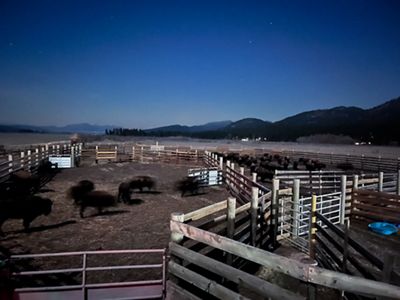
Derrick Bluff is the third generation of his family to herd buffalo. The Kalispel buffalo program was founded by his grandfather. Today, the program employs roughly a dozen men to mend fences, tag and inspect buffalo, and on this night, they were all gathered for the large task of adding the relocated herd to their fields. The good-humored group of ranchers were equipped with ATVs and courage, and they were joined by a small group of aunties, cousins, wives and friends gathered around a fire to keep warm as they witnessed. They laughed and cheered as the stubborn buffalo refused to exit the trailers without a fight.
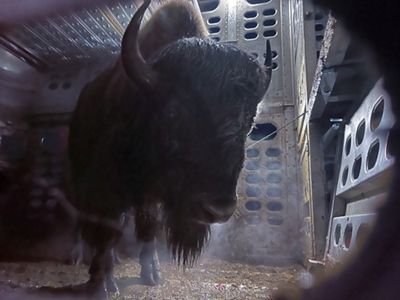
The buffalo thrashed and kicked their hindlegs in protest of the ranchers’ sticks, rattles and commands to, “haas” and “c’mon!” Unmoved, buffalo huffed, their breath visible in the air. They kicked, sending waste flying from the floor of the trailer into the faces of their new caregivers. This went on for four hours, as each buffalo was eventually convinced to roam a new landscape.
Despite the muck and cold, everyone present was gracious and jovial. Perhaps their excitement is best understood in context with the history of buffalo in the U.S.
Colonial Environmental Warfare
Upon contact, settlers and the newly formed U.S. government actively flushed Indigenous peoples from their homelands onto reservations by brutally violent means. Influenced by the theology of the 1493 Doctrine of Discovery, Manifest Destiny and theories of “westward expansion,” settlers greedily demanded more land, and in turn, they took more lives. The buffalo was a target of this violence.
Attempts to extinguish this species both spiritually and physically weakened Indigenous communities who revered the buffalo as a relative—a feature in ceremony, song, foodways and an abundant source of tools and shelter. According to a 2018 article in Indian Country Today (ICT), pre-contact reports observe approximately 60 million buffalo roaming the country. Today, the U.S. Fish and Wildlife Service reports roughly 440,500 bison are in conservation or commercial herds. Though no longer an endangered species, the buffalo’s sharp drop in numbers shows the ferocity of colonization.
Indian Country Today’s article references The Destruction of the Bison: An Environmental History 1750-1920, by Andrew Isenberg, Temple University history professor:
Isenberg said, “Some Army officers in the Great Plains in the late 1860s and 1870s, including William Sherman and Richard Dodge, as well as the Secretary of the Interior in the 1870s, Columbus Delano, foresaw that if the bison were extinct, the Indians in the Great Plains would have to surrender to the reservation system.” Colonel Dodge said in 1867, “Every buffalo dead is an Indian gone,” and Delano wrote in his 1872 annual report, “The rapid disappearance of game from the former hunting-grounds must operate largely in favor of our efforts to confine the Indians to smaller areas, and compel them to abandon their nomadic customs.”
These colonial strategies not only destabilized Native communities, but they also harmed biodiversity and the overall health of our prairies. Buffalo are a keystone species, deeply nourishing to the prairies where they graze. TNC science writer Cara Cannon Byington says, “they have a disproportionate effect on the overall health and productivity—the whole trophic cascade of life—in the ecosystem.”
Since 1978, The Nature Conservancy has raised bison across 11 preserves in 10 states, including upwards of 6,000 buffalo. TNC is one of the largest private bison producers in the United States. For more than 30 years, InterTribal Buffalo Council (ITBC) restores balance to the relationship between Indigenous communities and the American Bison. This partnership illuminates the value of the American Bison beyond their conservation merit. Against the backdrop of colonization’s harm, returning buffalo to Indigenous communities supports Indigenous sovereignty and restores spiritual and cultural connections to the animal.

Kalispel Food Sovereignty
Here’s how this partnership works: when TNC’s buffalo herd becomes overpopulated, ITBC connects TNC to Tribal Nations who are willing to receive the surplus. TNC funds and executes the rehoming without strings attached—no conservation regulations or monitoring—as acknowledgement of a Tribal Nation’s sovereignty. This is as it should be.
While many Native people revere the buffalo as a sacred animal, Derrick focuses on the practical relationship between the Kalispel and the buffalo. Though bison are not native to Northeast Washington, he explains the Kalispel people were known to hunt buffalo across Idaho and Montana. This practice is so embedded in Kalispel culture that an annual pow wow features two slaughtered buffalo, which are roasted for hours over fire by Derrick and his ranch hands. They say two buffalo can feed up to 1,500 people.
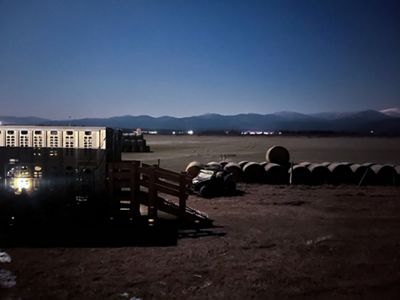
As if bracing himself for a played-out, romanticized ideal of the Native-buffalo relationship, Derrick smiles and offers, “I'm a simple man.” He says people often expect him to discuss buffalo in a “spirit animal” kind of way. “You won't hear that from me... I can't talk like that.” Though it’s not his way, Derrick doesn’t deny the value of these perspectives, some of which he says are taught by his elders.
But, food sovereignty and generosity are Derrick’s approach to herd management. He plans to give away most of the buffalo meat to non-Native and Kalispel people, saying of the newly added TNC buffalo, “A year from now, most of this herd will be slaughtered and used to feed people.” He goes on, "today, poor people can't even afford cheap food." Chuckling with nostalgia, he talks about his favorite “rez foods,” like Vienna sausages and canned Spam. He says these cheap foods have been appropriated, and their costs are now inflated. This reality, combined with loads of compassion, drives Derrick’s aspirations to build a Kalispel bison slaughterhouse and butchery. He intends to operate this in balance with a sustainably managed herd—taking note of a successful model other tribal nations have achieved. He hopes these efforts will further support the Tribe’s ongoing food production and profits.
“I'd like to work more with The Nature Conservancy in the future,” he said. He acknowledges that other surrounding Tribal Nations may be wary of working with white-led organizations, but he sees an opportunity to lead by example and hopes other Nations will receive TNC’s partnership and offer to rematriate buffalo.
We Can’t Save Nature Without You
Sign up to receive monthly conservation news and updates from Washington. Get a preview of Washington's Nature News email.
